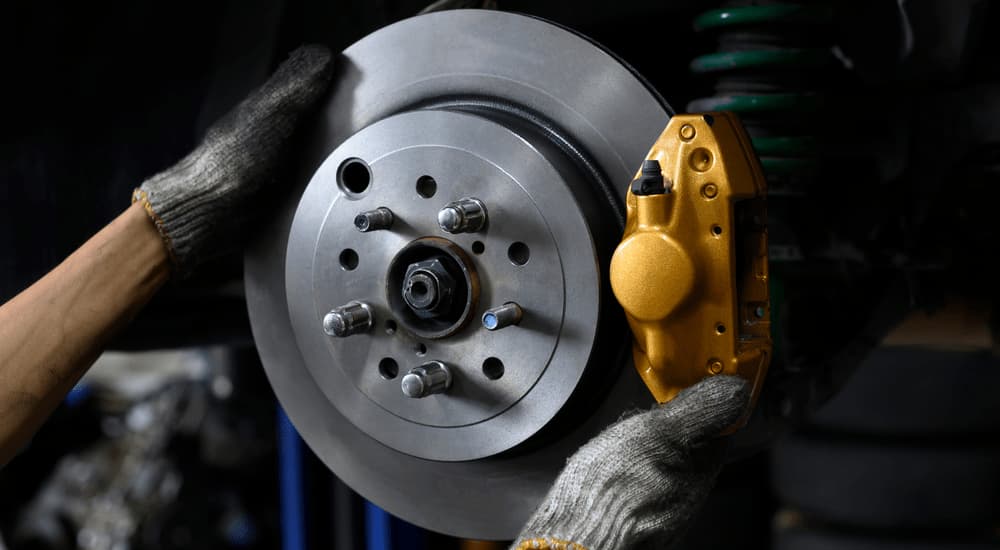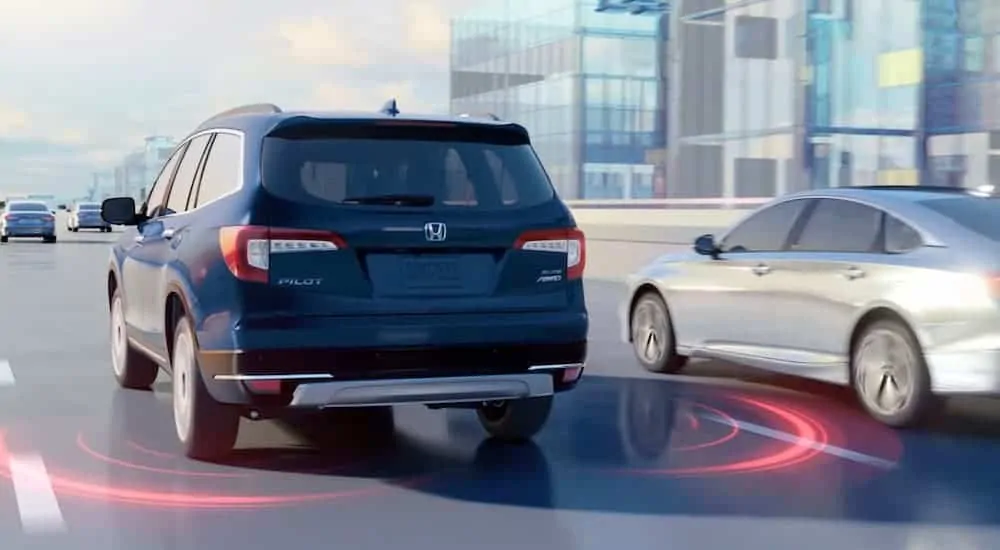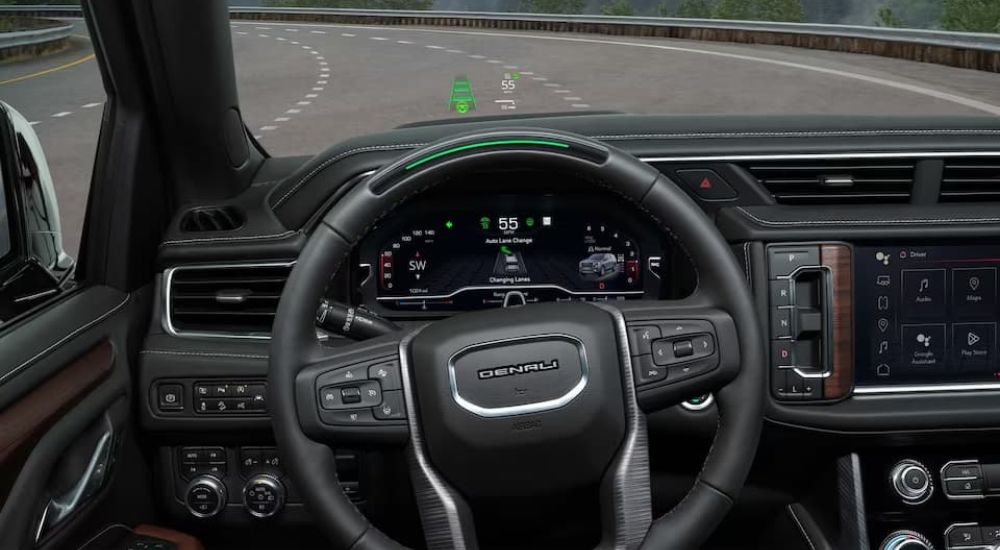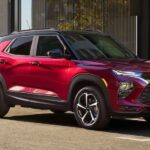There’s no denying that vehicles are more complex today than they’ve ever been before. All you have to do is listen to any advertisement, and you’ll notice that a slough of features and accessories are listed, with many of them generating a considerable amount of interest from the vehicle-buying public. The new features that are available on trucks, SUVs, and cars for sale are in a consistent state of evolution. There are so many available these days that it might seem perplexing as to which ones are necessary for safety and which ones aren’t. Today, we’ll be shining a spotlight on the ones that we feel are essential for any driver to take advantage of.
Driver Alertness Monitoring
It might alarm you to know that there are hundreds of thousands of collisions each year that are all linked to a common factor: a driver who’s drowsy behind the wheel. There’s certainly no shortage of public service announcements that warn about the dangers of driving while intoxicated or texting, but driving while you’re tired can be just as dangerous. Your senses aren’t functioning at full capacity, and this can lead to disastrous results. Driver alertness technology actually monitors such things as steering patterns to indicate when there’s a significant change and alerts the driver. Sometimes we’re not as focused as we think we are, and this reminder can save lives.
Collision Mitigation
When someone learns to drive, they’re taught the basic fundamentals of being safe behind the wheel and how to employ these techniques while they’re on the road. One thing that all drivers learn, but only from years of driving experience, is reaction time. The moment in which something is noticed, such as another vehicle or obstruction, and the moment in which evasive maneuvers are employed goes by in less time than it takes to blink. With the use of cameras and radar, collision mitigation takes notice of these potential threats and issues a warning to the driver faster than the human brain can notice and react. No matter how experienced you might be behind the wheel, any help in alertness is imperative to avoid a potential collision.
Automated Emergency Braking
When the safety features of any vehicle are listed, automated emergency braking and collision mitigation are usually described together, and there’s a good reason for that. Much like collision mitigation, automated emergency braking operates with the use of radar sensors and camera-based technology. If a collision is imminent and the driver has not reacted in time, it applies the brakes automatically to slow down and bring the vehicle to a stop. As we previously mentioned, reaction time is something that’s learned over time with experience, so this is a feature that’s particularly necessary for younger drivers, but we can all benefit from it.
Lane Keeping and Departure Assistance
Aside from reaction time, one of the most important aspects of being safe behind the wheel is visibility. It’s important that any driver be aware of their surroundings while they’re on the road, especially staying in their lane. Lane keeping and departure assistance are two features that come standard on many vehicles. As the name suggests, lane departure warning alerts the driver if they are in danger of veering out of their lane. If the driver doesn’t respond quickly enough, lane keeping kicks in to help prevent drivers from leaving the lane they’re driving in. This involves corrective steering to ensure that drivers stay on course.
Automated High Beams
As we mentioned, visibility is imperative during your travels, and depending on where you might be going, it’s not always present. High beams are not a new development, by any means, but in recent years automatic high beams have enabled a great leap forward in terms of helping all drivers maintain better visibility. Automated high beams engage to light up the night when visibility is limited, but will also disengage in the presence of traffic so as to not blind other drivers. It’s just one more thing drivers don’t have to worry about, enabling them to focus on the more important tasks of driving instead.
Parental Oversight
Long before your children go for their final driving test, parents do their best to impart the wisdom they’ve accumulated over the years in terms of driving safely. As anyone with offspring will tell you, teenagers aren’t always the best at listening. GM’s Teen Driver program allows parents to have oversight regarding the habits their children are practicing behind the wheel and even allows parents to set limitations on speed and stereo volume. It’s sort of like a report card that ensures a passing grade in the world of safe driving. GM equips this as a standard feature on all of their vehicles.
Adaptive Cruise Control
One of the biggest leaps forward is safety and driving assistance technology. Adaptive cruise control is one of the most sought after features by many drivers these days. For many years, the basis of cruise control was keeping the engine at a constant speed without the driver having to apply pressure to the gas pedal. This feature was ideal for lengthy stretches of highway driving that required drivers to keep a consistent speed for long periods of time. Adaptive cruise control takes this concept and applies the same technology found in automated emergency braking and collision mitigation and brings the concept into the modern age. By monitoring traffic patterns, a vehicle’s speed is automatically adjusted in order to preserve reaction time by keeping a safe distance from the other drivers. Rather than the driver having to turn off regular cruise control, adaptive cruise control will adapt to the speed of traffic, slowing down for slower vehicles ahead, then resuming speed when traffic clears. Some systems have built-in traffic sign recognition, which can help ensure that your vehicle doesn’t exceed the speed limit.
Semi-Autonomous Driving and Hands-Free Mode
Sadly, we’re still quite a ways off from when flying cars come into the picture. However, one feature that’s been gaining a lot of traction and becoming more available to consumers is semi-autonomous driving, also known as hands-free. Ford and GM both have this feature available on select models. Going a few steps beyond adaptive cruise control, the system allows the vehicle to function without the driver’s hands being on the wheel across hundreds of thousands of miles of pre-programmed North American roads. While this doesn’t replace the habits of a cautious driver, it does wonders for the reduction of driver fatigue. While it’s still limited, it might be only a matter of time before this becomes standard on most, if not all, modern vehicles.
A Safe Future is the Best Future
The automotive industry has been hard at work developing features that promote safer driving conditions and allow for broader oversight regarding safety in our travels. Over the past few years, the technological innovations among the various manufacturers have shown a willingness to provide the very best for their customers. However, while these features are certainly impressive and can provide an added layer of protection, they don’t replace the highly effective and responsible habits of an experienced driver. It’s important to obey traffic laws at all times, remained focused on the road ahead, and obey any and all traffic laws. As a driver, you’re the first line of defense when it comes to the safety of you, your passenger, and the other pedestrians and vehicles that you share the road with.






